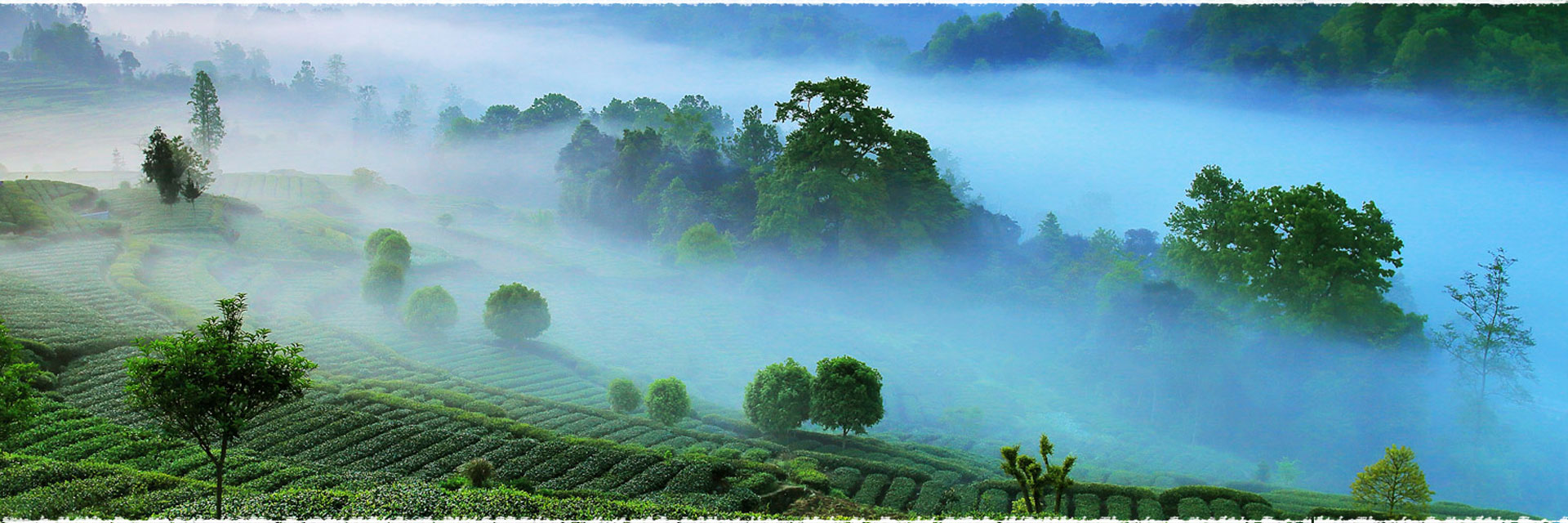Mengding Mountain, also known as Mengshan Mountain, is located in the Mengding Mountain Scenic Area, Mingshan District, Ya’an City, Sichuan Province, southwest of the Sichuan Basin, across the northwest side of Mingshan City. It is distributed in a northeastern-southwesterly belt that reaches as far as Ya’an, and is high in the north and low in the south. It is around 10 kilometers long and 4 kilometers broad. Mengding Mountain is surrounded by five peaks, shaped like a lotus flower, Shangqing Peak, the highest peak, about 1456 meters above sea level.


Climate
Mengding Mountain is located in Ya’an, a well-known rain city, wet and humid, with a subtropical humid monsoon climate. There is neither an extreme cold in winter nor an extreme heat in summer, and the average temperature is around 15°C each year, 5°C per year on average in January, and 23°C per year on average in July. As much as 95% of Mengding Mountain is covered in forests. In Mengding Mountain, the wet climate has produced a diverse variety of tea plantations, including both cultivated and wild tea plants.


Attractions
Tiangai Temple 天盖寺
Tiangai Temple, located on top of Mengding Mountain, was founded in the Han Dynasty and rebuilt in the Song Dynasty. It has 8,000 square meters in size and is surrounded by 12 thousand-year-old ginkgo trees, making it even more peaceful. The stone pillar hall built during the Ming Dynasty in the center was where Wu Lizhen, the creator of Mengshan tea, grew tea in his dwelling.


In the main hall, there is a full-body statue of Master Wu Lizhen, as well as images and documents depicting the history of Mengshan tea. Tiangai Temple has the greatest view of the scenery because it is at the summit of the mountain. In the distance, there are mountains. The most comfortable thing is sitting on the stone table under the trees, drinking tea and admiring the surroundings.
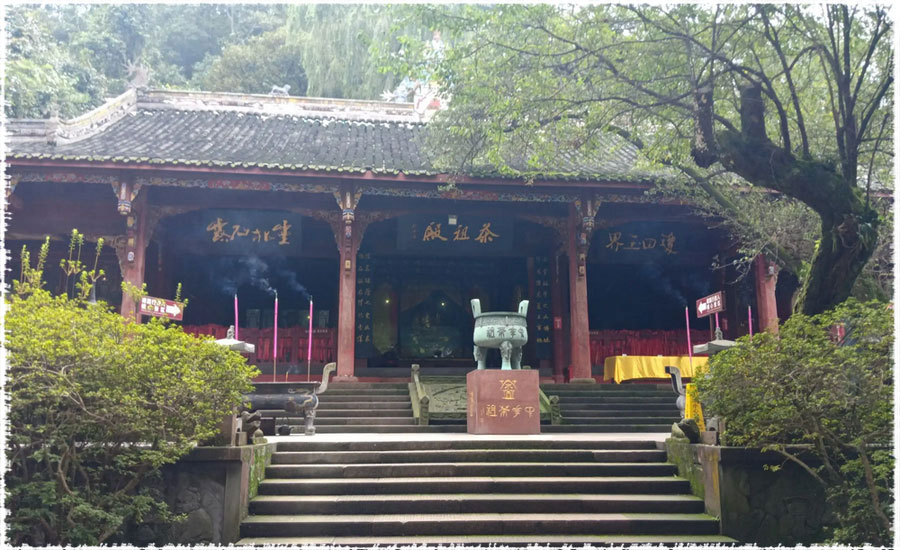

Imperial Tea Garden皇茶园
Imperial Tea Garden is situated amid the five hilltops of Mengding’s main peak. The five hilltops are shaped like lotus flowers, with Imperial Tea Garden in the center, creating a “Feng Shui Treasure Land”. Wu Lizhen, the creator of Mengshan tea in Han Dynasty, planted seven “Lingming Seeds” here.
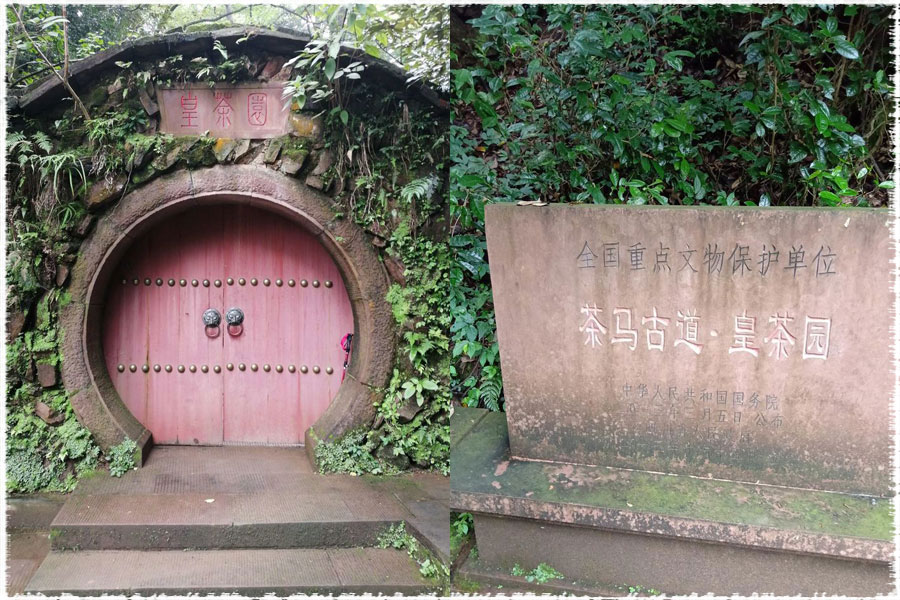

Tribute tea has been harvested here since the Tang Dynasty, but it was formally named “Imperial Tea Garden” in Song Xiaozong Chunxi thirteenth year. Stone walls surround the tea garden, which has double stone doors on the front, stone couplets on both sides “扬子江心水、蒙山顶上茶- Like the water in Yangtze River, the Mengding tea has the top quality” and “Imperial Tea Garden” in the middle.
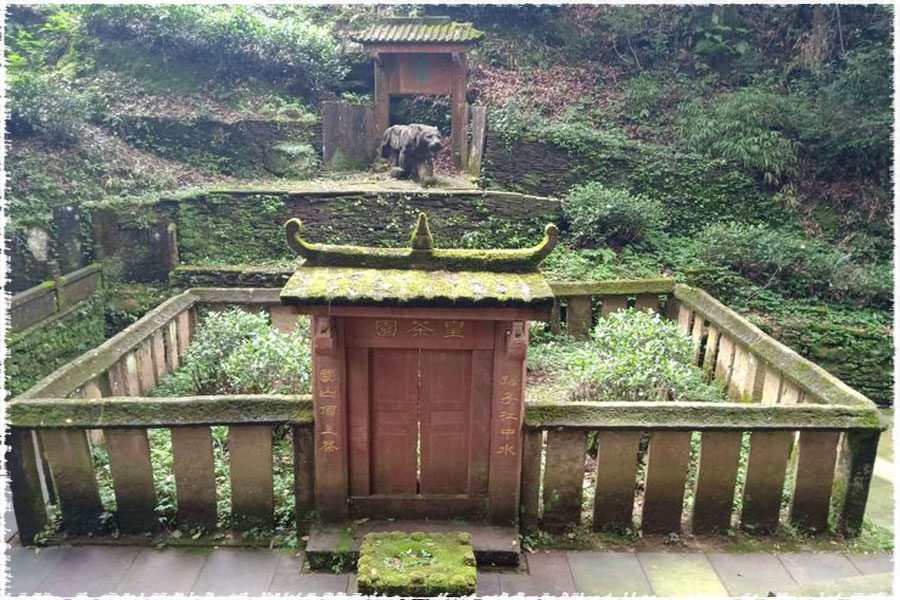

Ganlu Stone House甘露石室
Ganlu Stone House is located on Gan Lu Peak, the left side of Imperial Tea Garden. It was constructed using distinctive stone building techniques, including stone pillars, stone halls, stone bucket arches, and stone roofing.
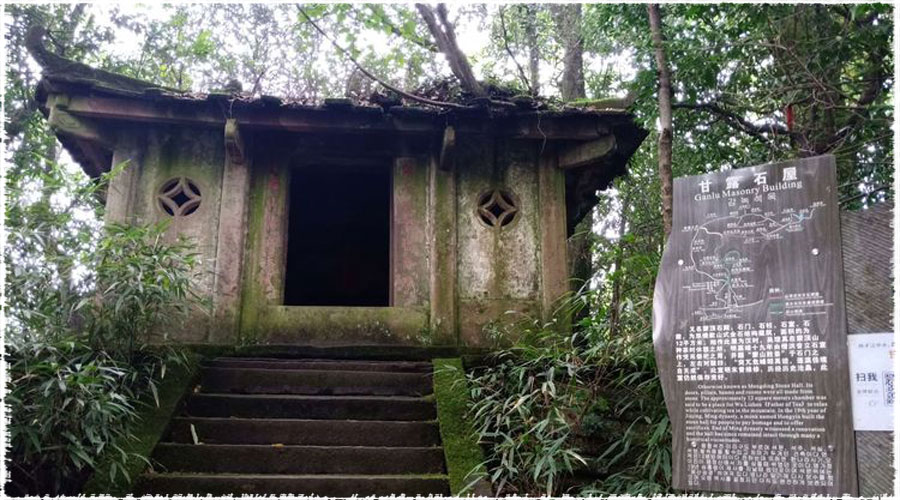

Mengquan Well蒙泉井
Mengquan Well, also named “Gan Lu Well” is besides the Imperial Tea Garden, which has two stone tablets to “Ancient Meng Well” on the side. Wu Lizhen used to draw water from the well to plant tea trees.
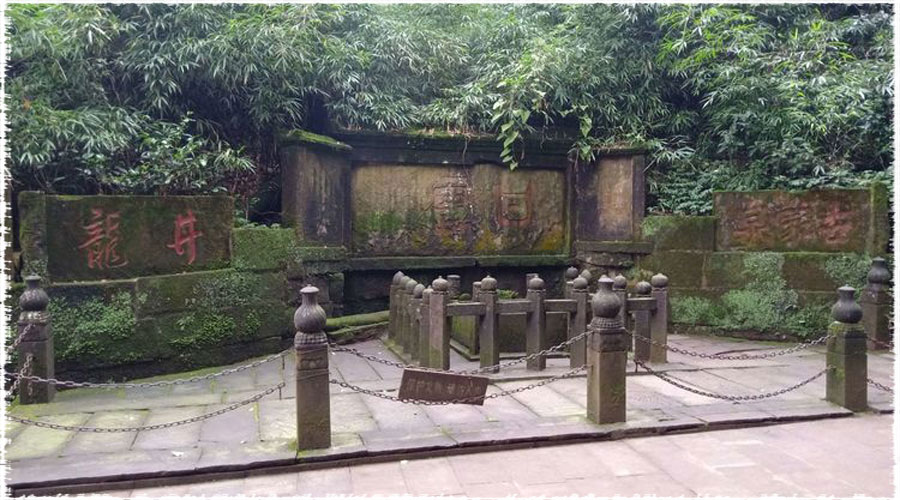

Tea History Museum茶史博物馆
The Tea History Museum is located at the starting point of the High Ladder. There are literatures, poems, specimens and tea utensils about Mengding tea in the museum. It has literature, poetry, artifacts, and tea equipment regarding Mengding tea.
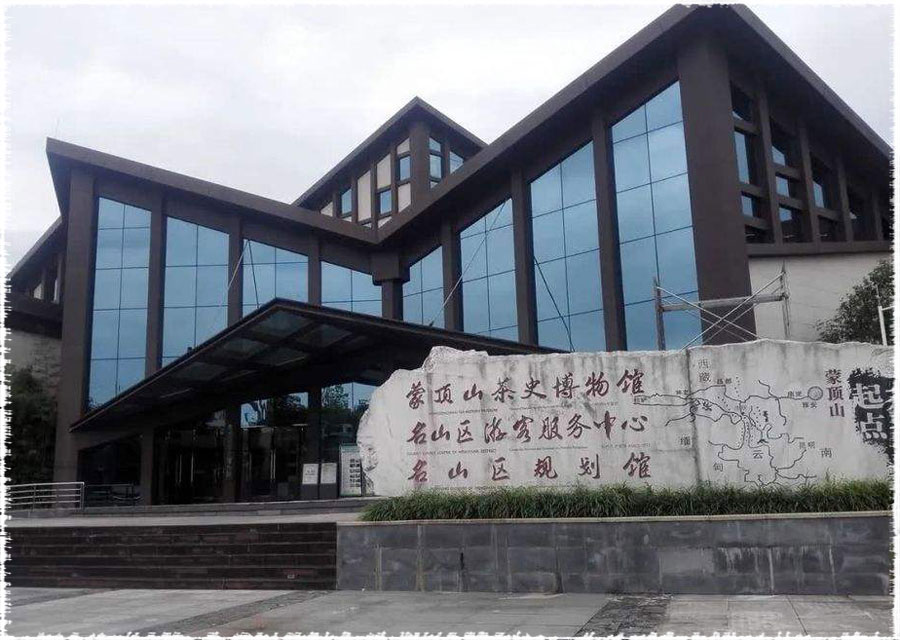

Tea Brewing Skill- Mengding Mountain 18 Forms of Dragon- Flying Postures 龙行十八式
Mengding Mountain’s unique tea brewing expertise is “Mengding Mountain 18 Forms of Dragon-Flying Postures” using Long Spout teapot. The tea master holds a long spout teapot, turned it around, lifted the handle of the pot, and accurately poured the water into the Gaiwan.
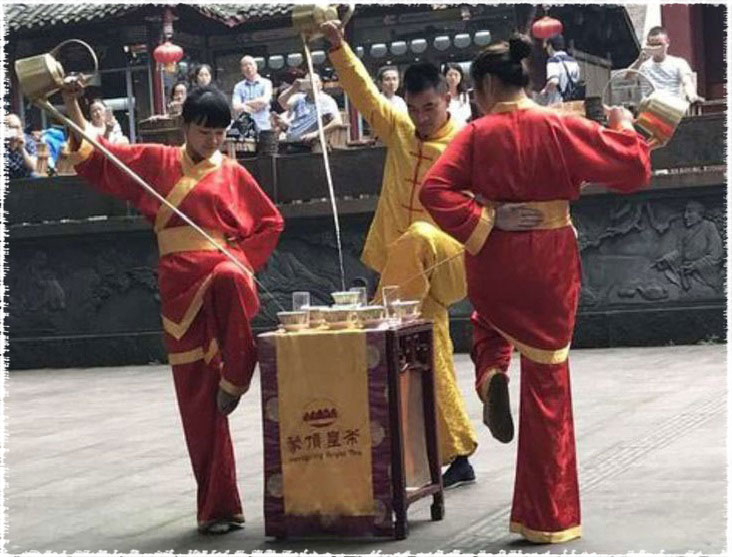

Tea Culture
Meng Ding Mountain is the cradle of the world’s tea culture, as well as the location of the first tea plantations documented in written Chinese. Ya’an has a long history of producing tea dating back thousands of years. With the aroma of tea, tea civilization began here, and from here, tea culture spread throughout the world.
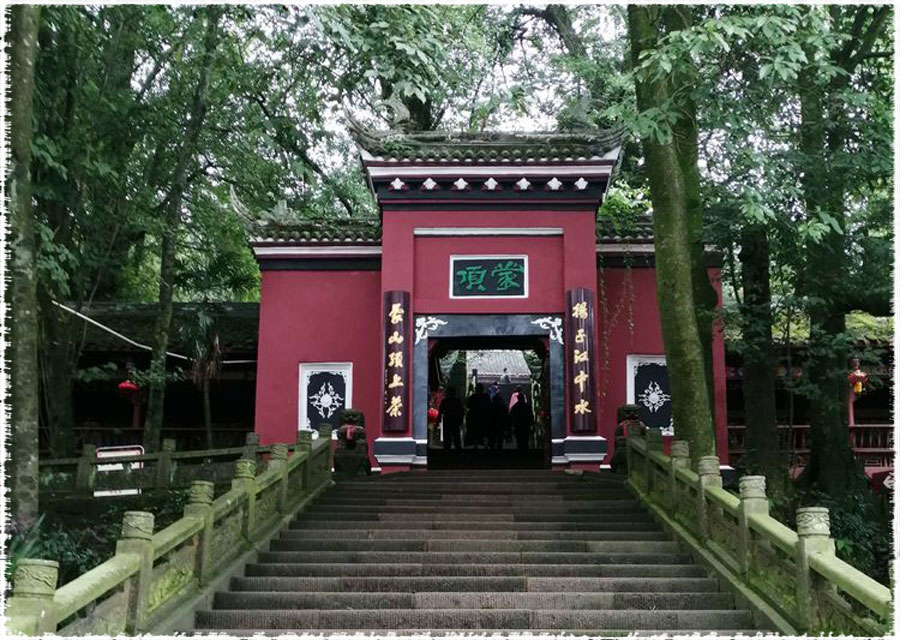

Ancient Tea Horse Road


Ya’an is not only the birthplace of tea culture, but also the starting point of the Ancient Tea Horse Road. Ya’an tea has been a beloved beverage of the Tibetan people since it was first introduced to Tibet during the Tang Dynasty.
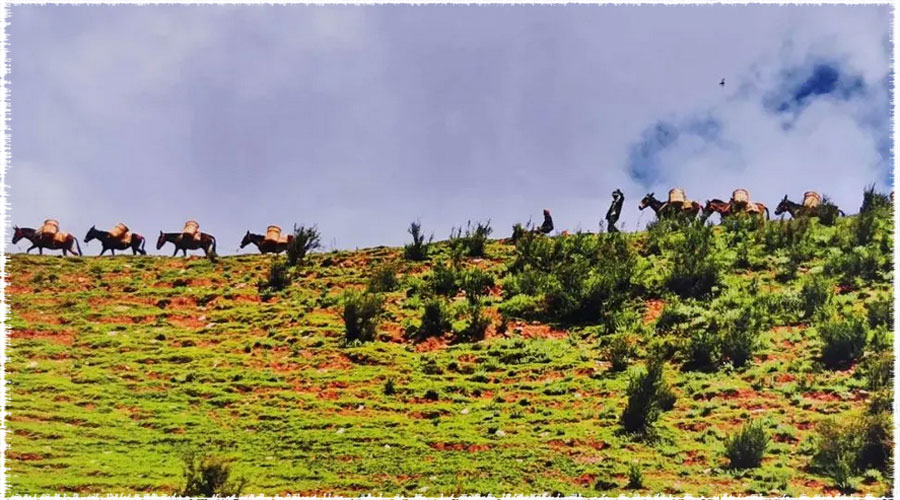

Ya’an is next to Tibet, so communication and trade between the two locations are simple, from basic bartering to large-scale “tea for horses,” which gradually formed a very important ancient trade route from Ya’an, Sichuan to Lhasa, Tibet.


Because of the long distance, the porter’s crutches must be coated with an iron layer, and these crutches are the marks left by the collision of iron and stones.
The Mengding Teas Teavivre Have
Nonpareil Ming Qian Meng Ding Gan Lu Green Tea


Mengding Ganlu is the representative of curly green tea. The fresh tea buds are made by the ancient process of “three-time fried, three-time rolling”. The finished tea is aromatic, the leaves are tender and curled with plenty of white hairs, and the liquid is yellowish-green without color-changing even after a long time brewing.

Gardenia Mao Feng Green Tea is made of the spring tea material which were harvested before Qing Ming on Mt. Mengding, Ya’an, and blended with the local gardenia flowers which bloomed in early summer, soft and sweet, with a rich gardenia scent and a pleasant tea aroma.

This Meng Shan Mao Feng comes from Mt. Mengding, Ya’an, Sichuan, well-selected one bud with one leaf raw material, the finished tea has a special floral notes, tastes very refreshing and sweet, mellow and smooth with a lingering fragrance in our mouth.
Bi Tan Piao Xue Jasmine Green Tea
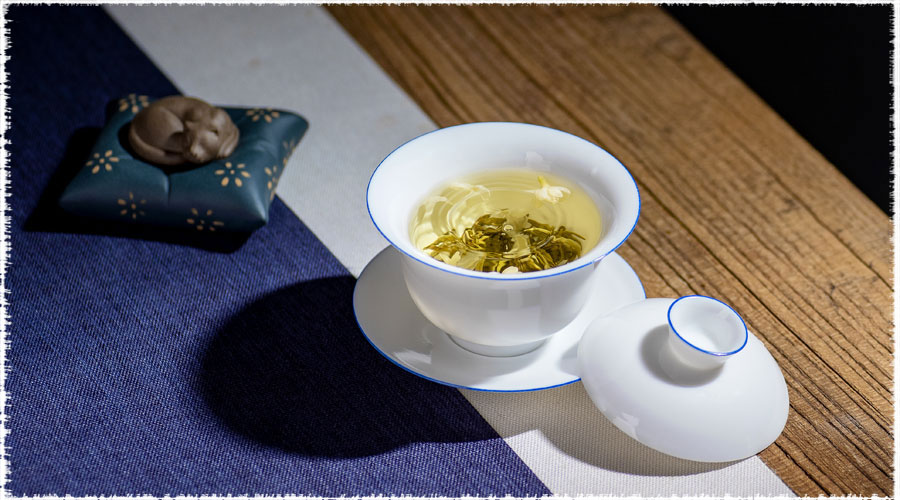

Bi Tan Piao Xue Jasmine Green Tea, a jasmine green tea, is selected the jasmine flower in Hengxian County of Guanxi and green tea in Mt. Mengding of Ya’an as the raw materials. After 7 times of scenting, the tea leaves fully absorb the jasmine fragrance, which makes the tea sweet and jasmine aroma strong and fresh.

This osmanthus black tea is made by the carefully picked the tea buds of Meizhan tea tree species, after the fermented, and then scented together with the osmanthus flowers that blooms in September and October.
More Mengding Tea


Meng Ding Huang Ya Yellow Tea
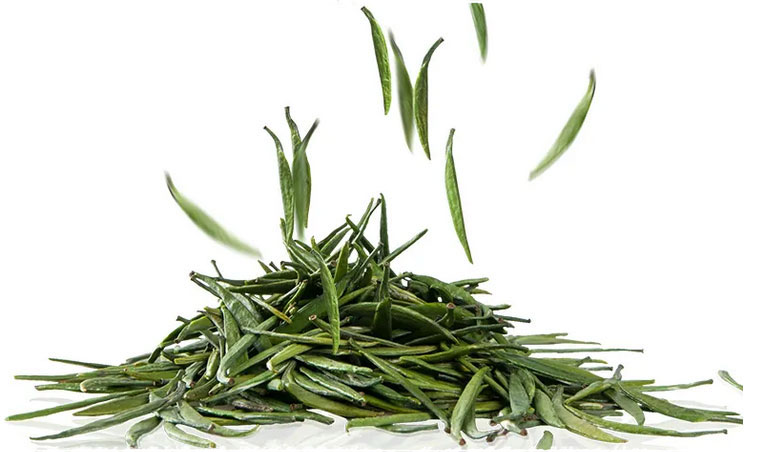

Meng Ding Shi Hua Green Tea
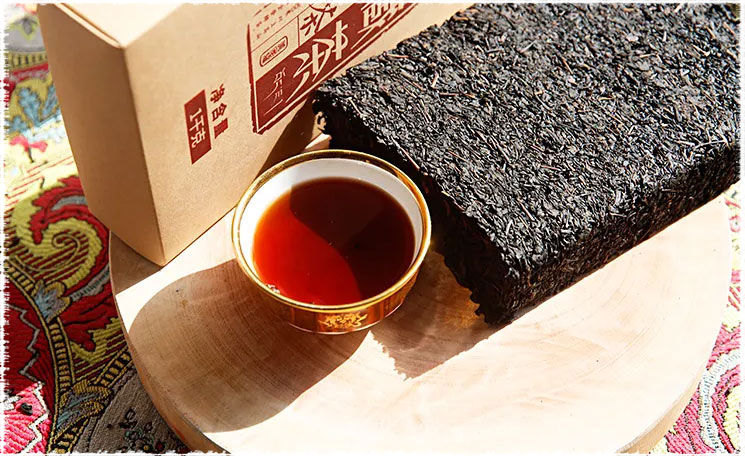

Ya’an Tibetan Dark Tea
…
If you enjoyed this article, you might also like to read the following articles:
The Four Sub-categories of Green Tea
Celebrate The Spring’s Arrival with a Jasmine Tea Treat
What Do You Know About Yellow Tea?
Butter Tea
 Exploring the Charms of 2024 Spring Tea Garden with Angel
Exploring the Charms of 2024 Spring Tea Garden with Angel Yingde Black Tea
Yingde Black Tea Matcha vs. Green Tea Powder
Matcha vs. Green Tea Powder
